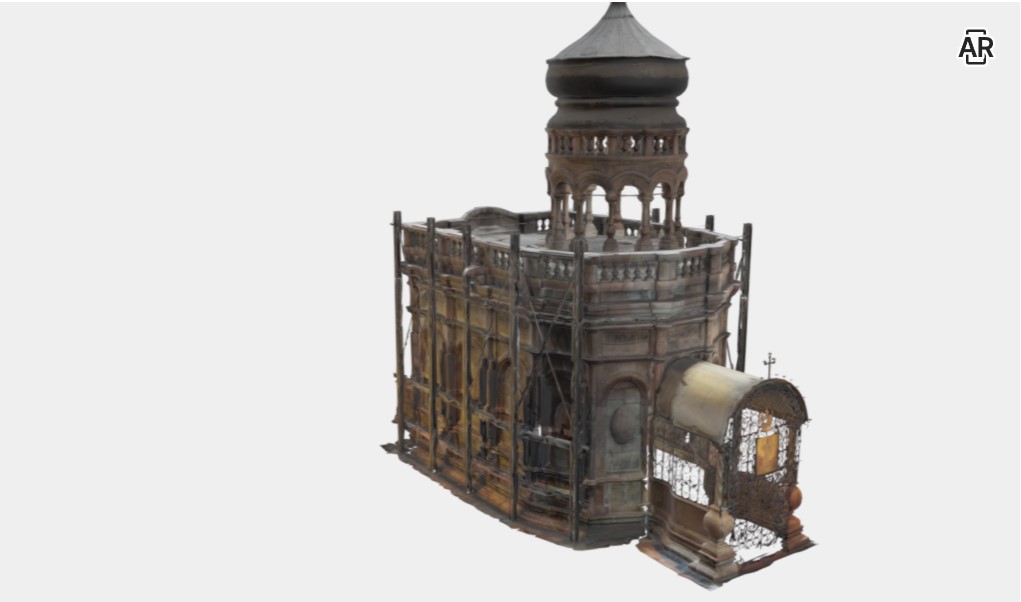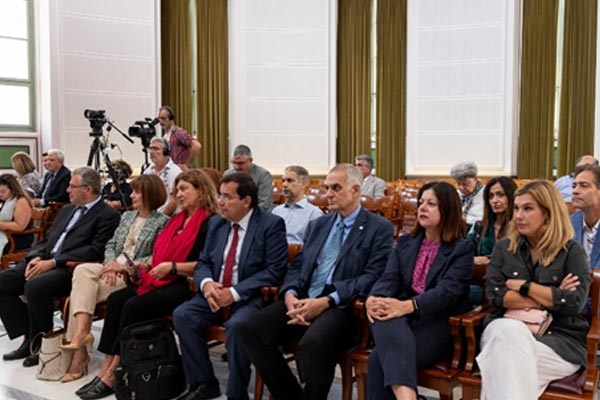The work of the 3rd International Scientific Conference TMM_CH continued for the second day on the theme “Innovative, Interdisciplinary, Digital Preservation of Cultural Heritage: Redefining the identity of the world in crisis and conflict, through culture” organized by the National Technical University of Athens from 20 until March 23, 2023 at the Eugenides Foundation in Athens . The International Conference, chaired by Emeritus Professor Antonia Moropoulou, is co-organized by the Technical Chamber of Greece, in collaboration with international organizations and councils, scientific associations and cultural heritage protection bodies.
” ensuring the compatibility and integrity of historic materials and constructions, as well as architectural authenticity “, was the topic of the Round Table Discussion 6 dedicated to the memory of the Professor of the Ca’ Foscari University of Venice in the Chemistry of the Restoration of Monuments, in Department of Environmental Sciences, Guido Biscontin , who passed away last June.
As emphasized in a related announcement, the discussion was moderated by his successor at Ca’ Foscari University of Venice, Professor Elisabetta Zendri , who, like his students, Stelios Bakolas , Associate Professor at the National Technical University of Athens, and Noni Maravelaki , Professor at the Technical University of Crete, presented his multifaceted work and his inquisitive personality, who constantly asked questions and researched to get answers, to create new materials on an industrial scale and to apply and evaluate them in the monuments.
As the President of the Conference, Tonia Moropoulou , pointed out, “with Guido Biscontin we studied 400 monuments in the Mediterranean and around the world, we certified the negative effects of incompatible materials and conservation interventions, as in Knossos from the Evans conservation with reinforced concrete, and we highlighted the the need for the maintenance and preservation of the Cultural Heritage to be done with compatible materials. In particular, the restoration mortars must be composed with the “reverse engineering” methodology, based on historical mortars to ensure the structural integrity of historical structures and their sustainable preservation, such as Hagia Sophia in Polis which thus survived the great earthquake of 1999 , but also of the restoration project of the Holy Tomb of the Holy Sepulcher”.
Next, Professor Stefano della Torre , from the Polytechnic University of Milan, underlined the need to manage incompatibility. The Professors of Architecture of the National Technical University of Metsov, Mrs. Irini Efesiou and Mrs. Andronikis Miltiadou , Professor Panagiotis Spathis of the Department of Chemistry of the Aristotle University of Thessaloniki, Professor Vlatka Rajčić of the Faculty of Civil Engineering of the University of Zagreb, Lecturer Adi Sela Wiener , of Architecture of the Bezalel Academy of Arts and Design in Israel, documented their views that the preservation of architectural authenticity is linked to the original materials and constructions and the possibility of their restoration in a compatible way, in terms of materials and the environment. Finally, Ms. Vasiliki Eleftheriou , Director of the Acropolis Monuments Maintenance Service, actively gave the example of the multidimensional, but unified approach to the monuments of the Acropolis in Athens.
With the participation of Omot. Prof. Stefanou Dritsou , of the Department of Civil Engineering of the University of Patras, Associate Professor Haris Mouzakis , Director of the Anti-Seismic Technology Laboratory of NTUA, Associate Professor Daniel Oliveira , of the Department of Civil Engineering of the University of Minho, Associate Professor Korina Papanikolaou , of the Department of Civil Engineering of the University of Patras, Omot. Prof. Georgiou Penelis , of the Civil Engineering Department of the Aristotle University of Thessaloniki, Associate Professor Antonella Saisi , of the Architecture of the Technical University of Milan, and Professor Georgios Stavroulakis , of the School of Production and Management Engineering of the Technical University of Crete, and with the coordination of Professor Marco Corradi , of the Department of Mechanical and Construction Engineering, Northumbria University, Round Table Discussion 7 on ” restoration of structural integrity and seismic protection of monuments “, raised important questions such as: Are finite element numerical analysis models reliable to assess the vulnerability and to redesign the monuments achieving their anti-seismic protection? How can priorities for seismic protection projects be documented?
The discussion highlighted the need to feed the finite element models, both with the response data of the historical structures to seismic vibrations or artificial accelerations with the installation of sensors, and with the real data of the strength and elasticity of the materials at critical points of the structures. With these data, making use of modern technologies, the scientific documentation of the really necessary priorities for the anti-seismic restoration of the monuments can properly support the making of political decisions, setting aside the logic and tactics of the correlation of forces and exercises of the power of expediency, as emphasized by Emeritus Professor Georgios Penelis from the Aristotle University of Thessaloniki.
In the Round Table Discussion 8 on the topic of ” strengthening the resilience of cultural heritage by combating the effects of climate change, natural disasters and pandemic threats with biosecurity “, the coordinators Mrs. Betty Charalambopoulou , President of Geosystems Hellas, and Prof. Charalambos Ioannidis , Dean of the School of Agronomists and Topographical and Geoinformatics Engineering NTUA, presented the equivalent European Research Program TRIQUETRA “Assessing and mitigating climate change risks and natural hazards threatening cultural heritage”, which as they emphasized, aims to identify, measure, assess and face the risks of climate change, while TRIQUERTA members, Prof. Salvatore Martino , from the Sapienza University of Rome, Mr. Daniele Cerra , from the German Aerospace Center, Mr. Kyriakos Themistokleous from the Eratosthenes Center of Excellence of Cyprus, presented specific cases of such applications, utilizing innovative high technology even aerospace.
Mr. George Alexandrakis , referred to the research results of the Technology and Research Foundation that certify the dramatic changes in the environment due to climate change, while Professor George Deodatis , from Columbia University, documented a series of environmental, economic and humanitarian disasters, as well as infrastructure disasters of modern cities in the USA, from the encroachment of natural disasters due to climate change. Professor Phoebe Kountouri , from the Athens University of Economics and Business, Director of Sustainable Development of the ATHINA Research Center, developed the framework of International and European strategies, both to reduce threats, and to adapt the world to protect itself from them. Ms. Anastasia Hasapi , from the company DNASequence, presented state-of-the-art applications of metagenomics and bioinformatics that achieve and document biosafety and elevated the company from innovation start-up to Company of the Year internationally by Life Science.
The President of the Conference, Professor Antonia Moropoulou , closing the discussion, asked herself: How much can we control and deal with climate change, or maybe we have chances to reverse the phenomena, if we do not actively fight the causes that cause them, such as the decarbonization of operations of the modern world with a radical change of the energy-intensive and environment-intensive processes of development, in modern cities, industries, energy economy? The necessary path is visible and requires the cooperation of the scientific community, local and central government and society. He informed that 30,000 attended the 3rd TMM_CH International Conference on its first and second day of work and that at the same time BCI Media Toronto was broadcasting to the whole world and that Cultural Heritage is not an issue within the walls but is watched by humanity.





